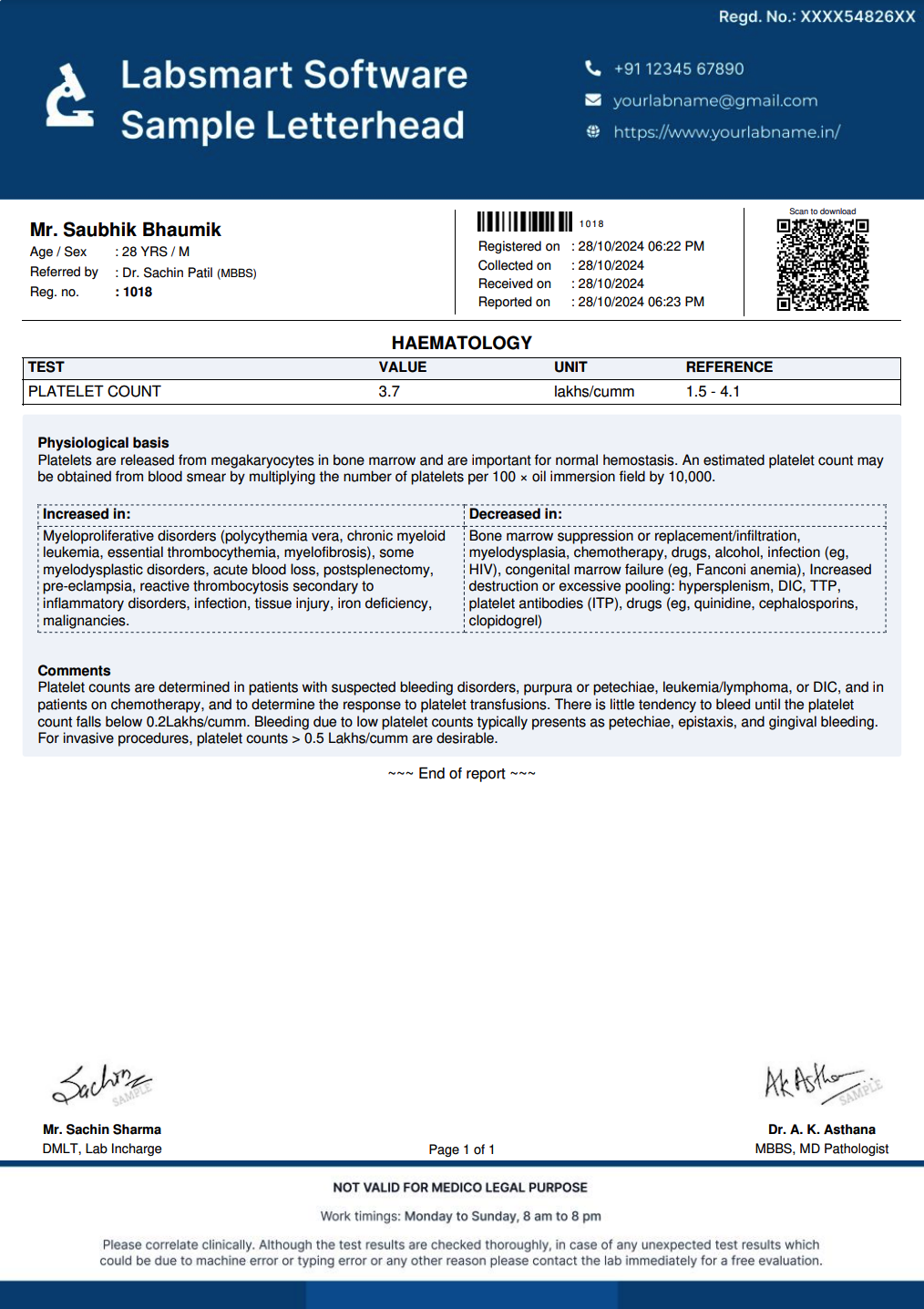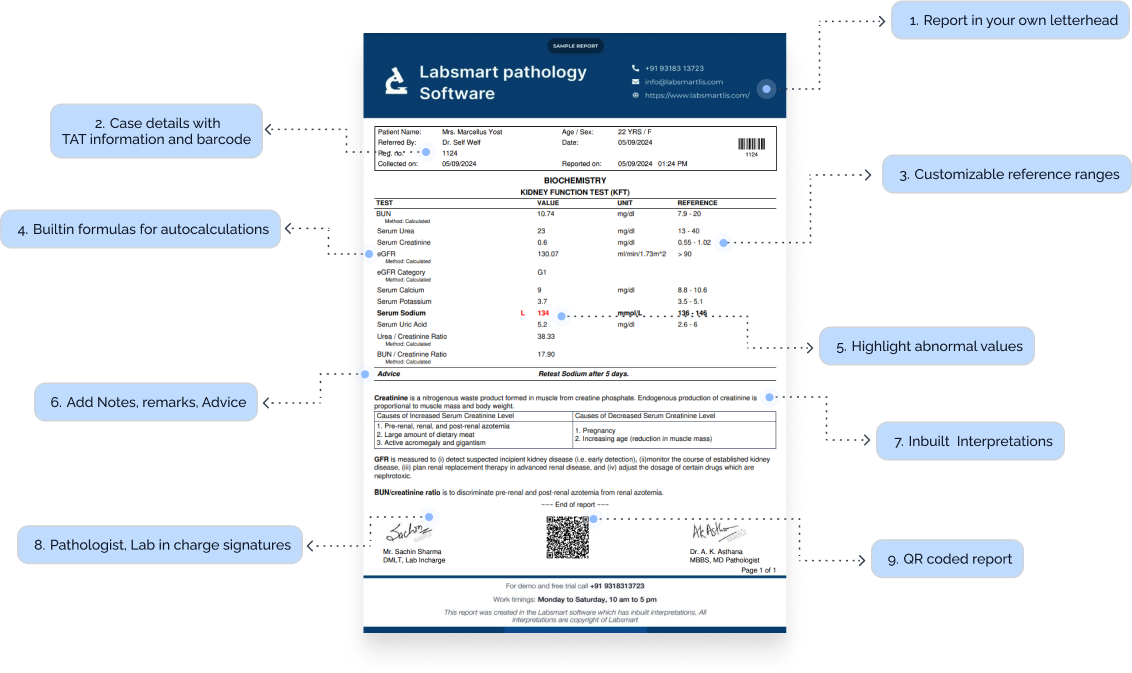What is Platelet Count ?
A Platelet Count measures the number of platelets in a patient's blood. Platelets, also known as thrombocytes, play a vital role in blood clotting and wound healing. Low or high platelet counts can indicate various medical conditions, making this test a key component in diagnosing disorders such as thrombocytopenia (low platelets) or thrombocytosis (high platelets).
Platelet Count Report Format: Breakdown
The Platelet Count report is often part of a Complete Blood Count (CBC). The report format of Platelet Count usually follows this structure:
Header Information:
- Patient Details: Full name, Age, Gender, and ID.
- TAT information: Timestamp for both sample collection and report generation.
- Doctor's Information: Name of the referral doctor, if applicable.
Test Results Section:
-
Patient's results
As obvious as it is, a test report should definitely have the patient's test result.
-
Result's Unit
The unit of the test result must be mentioned correctly in the report. Platelet Count test is generally reported in “lakhs/cumm”
-
Platelet Count Normal Value / Reference Range
The report must have the normal Platelet Count range. It can differ slightly based on the reagents used by the lab and other internal factors, but common Platelet Count ranges are:
For any gender, 0 to 100 year of age: 1.5 - 4.1 lakhs/cumm
Interpretations
Nowadays, most labs prefer to add interpretations to the reports, making the report more patient-friendly. Labsmart software has interpretations of all routine test pre-filled in the software.
Footer Section:
-
Certifications:
Display any relevant accreditations (e.g., NABL, ISO), adding to your lab's credibility.
-
Pathologist and technician signature:
It's mandatory to add a Pathologist and technician signature to the report.
Platelet Count Interpretation
In Labsmart software, this is the inbuilt interpretation for Platelet Count
Importance of adding interpretation to reports:
It's very helpful to add interpretation in reports as it makes the reports more patient friendly and also helpful to doctors in some cases. Moreover, presently most labs prefer providing reports with interpretation. Thus, adding interpretation to report will help your lab stay at par with other competitor labs.
Labsmart software
(With Interpretation and auto calculations)
- Billing
- Reports with Interpretation
- Auto calculation where needed
- Check daily business
- WhatsApp reports
* Free plan available

1.5 Crore+
Reports printed & delivered online
1250+
Labs Active
10+
Countries
Platelet Count MS Word format
Download the Ms word editable Platelet Count report format for offline reporting.
Download word format





